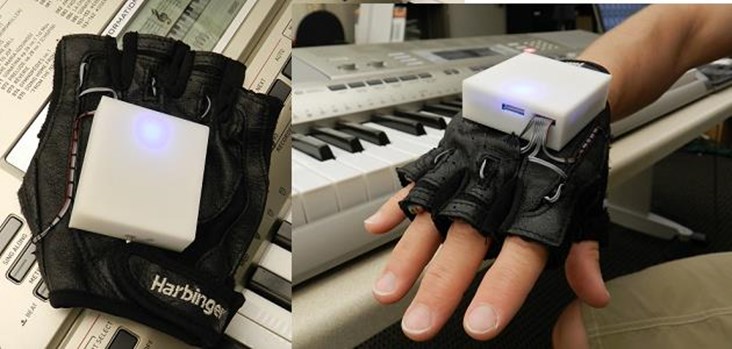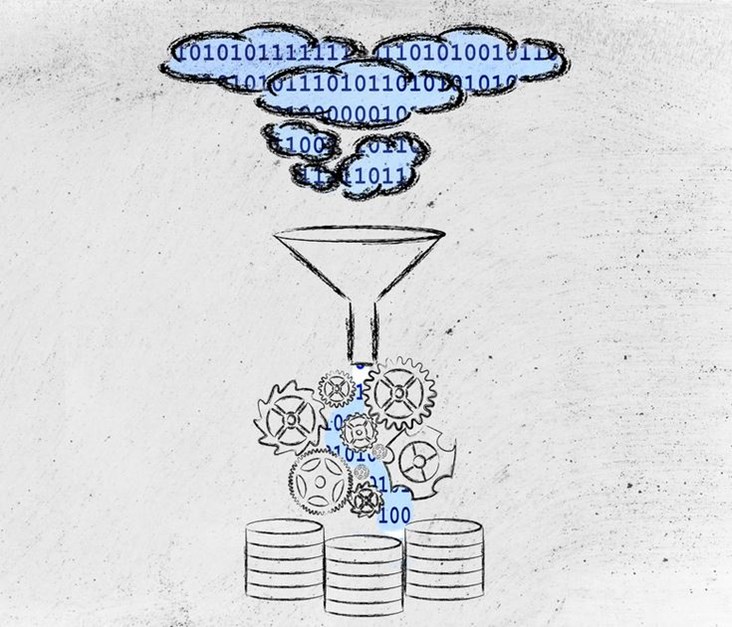
The Mobile Music Touch glove is perhaps the most bizarre gadget to come out of the wearable field. Pioneered by Thad Starner, a professor at the Georgia Institute of Technology and the technical lead of Google’s Project Glass, the glove engages the motor senses in such a way that builds, or embeds, new skills into its wearer. It could for instance teach you how to play a piano tune without having to touch a single piano key. Sounds like sorcery doesn’t it?
Arthur C. Clarke’s third law says that “any sufficiently advanced technology is indistinguishable from magic.” The Mobile Music Touch glove is a perfect embodiment of that proclamation.
There are five vibration motors embedded inside the glove, one for each finger. There is also software that controls the sequence in which they vibrate. The claim is as follows: if the motors replicate the sequence of a particular piano tune, and the process is repeated enough times, your hand will be conditioned to play that exact melody. In other words, enough stimulation, i.e. repetition, will build the muscle memory and your hand will know which keys to strike and when. Ariel Bleicher shares a candid account of what the device actually feels like and how it performs on IEEE Spectrum. During the demonstration, she learns to play the first 61 notes of Ode to Joy. You can find it here. Or you could watch the video instead:
Naturally, there’s a lot of skepticism around the system, namely whether it is practicable and efficient. For starters, just looking at the piano example, playing a tune is not just about the sequence of finger motion. The system cannot tell the difference between two successive notes that sit right next to each other or whether they are two, three, or four keys apart. It can’t know over which area of the keyboard the hand should be placed in the first place. The idea then becomes more about aiding than actually mastery of the skill.
The creator is definitely convinced of its potential though. He has referenced and likened his creation to a scene from the Matrix on more than one occasion. (In the IEEE article mentioned above and on TechCrunch as well.) It’s where Trinity learns to fly a helicopter by having the instructions uploaded to her brain.
But even he acknowledges that that is quite farfetched. Its potential and application nonetheless stretch far beyond learning popular refrains. The glove has been tested to improve sensation and motor skills for people with paralyzing spinal cord injury (SCI). While learning to play the instrument, several people with SCI experienced improved sensation in their fingers.
The experiment was conducted with individuals that had sustained injuries more than a year earlier. Usually, the majority of rehab patients see very little improvement during that time frame. “But we were surprised by how much improvement they made in our study. For example, after using the glove, some participants were able to feel the texture of their bed sheets and clothes for the first time since their injury,” according to Tanya Markow, Ph.D. graduate and the project’s leader.
The experiment took place over eight weeks where participants practiced playing the piano for thirty minutes three times a week. Half of them used the glove to practice while the other half didn’t. During the sessions, every person was shown a piano keyboard where the corresponding keys illuminated based on the tune. The participants that had the gloves on had vibrations sent to the corresponding finger at the same time. They also wore the glove at home for two hours a day, five days a week, feeling the same vibration pattern. The idea is to show that passive wearing of the device also has rehabilitative effects.
After eight weeks, participants were asked to perform a variety of grasping and sensation tests. Those who used the glove performed significantly better than those who just learned the piano without it.
“Markow believes the increased motor abilities could be caused by renewed brain activity that sometimes becomes dormant in persons with SCI. The vibration might be triggering activity in the hand’s sensory cortex, which leads to firing in the brain’s motor cortex. Markow would like to expand the study to include functional MRI results.”
Latest Business
Intelligence Report














